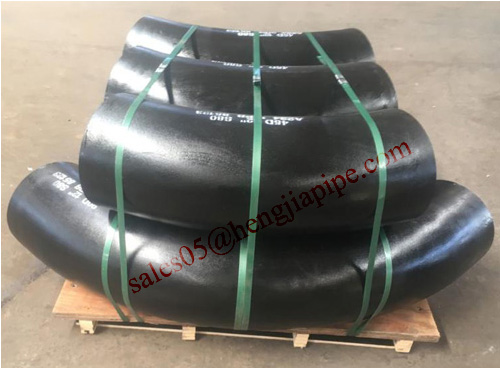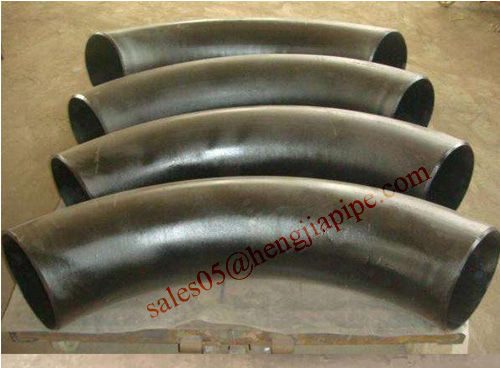After China's commercial vehicle market peaks, there are dangers that will return to normal and maintain steady development.
Steel bend
Compared with elbows, bend will have tangent length if the customers need. The bend radius is larger than elbows`. When it is more than 2D, it is called bend. There are 3D, 5D, 7D, 10D bends. Below picture is 3D bend with tangent length, angle is 45deg and 90deg.
Carbon steel 3D bend
These bends are packed by wooden pallet because of big volume.
As for manufacture standard, it is different from other pipe fittings. Its standard is ASME B16.49.
Materials are carbon, alloy and stainless steel. Wall thickness in common use is STD, XS and so on. With the development of the society, steel bends are widely applied in oil & gas transportation of pipeline system.
Pipe Bends,Weld Bend,3D Bend,Black Steel Bend CANGZHOU HENGJIA PIPELINE CO.,LTD , https://www.hj-pipeline.com
In 2010, the first heavy-duty trucks in China were sold and sold for more than one million vehicles, once again setting a new record in history, and many insiders who were cautious about the market were surprised. The blowout in 2010 exceeded almost everyone's expectations and was known as the peak in the development of the commercial vehicle industry in the past decade. After the peak, there are dangers. In 2011, China's commercial vehicle market is experiencing tremendous expectations and pressures. Whether it can reproduce the glory of 2010 has become a question repeatedly asked and discussed by many people.
In this regard, the judgment of the National Information Center's Economic Advisory Center is: The commercial vehicle market will return to normal in 2011, and the growth rate will not exceed 9%. Judgment of the 9% growth rate in the commercial vehicle market is due primarily to the long-term potential growth rate. By 2020, the overall market for commercial vehicles in China will maintain a growth rate of about 9%, which is lower than the average growth rate of 13.2% in the previous decade.
There are three main reasons for lowering the growth rate: First, the Chinese economy will maintain an average annual growth rate of around 9% in the next five years. Commercial vehicles are related to operations and its dependence on the economy is very strong. The growth rate of GDP in the past 10 years is consistent with the growth rate of commercial vehicles.
Second, by 2020, it is estimated that the potential growth rate of China’s GDP is still around 9%, which is able to support the normal growth of the commercial vehicle industry; however, the growth rate of GDP has fallen from the growth rate of 10.7% in the previous 10 years, so commercial vehicles The speed of the previous 10 years will also drop. According to the 12th Five-Year Plan, GDP growth during the 12th Five-Year Plan period is about 7%; judging from experience, the growth rate of the commercial vehicle market will be slightly higher than the GDP growth rate of the five-year plan, so predict the growth rate of the commercial vehicle market in the next 10 years. About 9%.
The third is the driving force for economic growth: industrialization and urbanization. The ratio of industrialization has remained at a stable figure of 47% in the past five years; the proportion of urbanization has increased by 1% each year in the past five years and is expected to reach 60% by 2020. The Twelfth Five-Year Plan also stated that consumption should be listed as the main target and urbanization as the carrier. The future development is to start domestic demand and further enable the urbanization of the population. Industrialization and urbanization will lead to large-scale construction investment, such as the large-scale construction of roads, railways, airports, ports, passenger and freight yards, urban infrastructure, and cultural facilities; and the increase in the consumption of large-scale commodities such as housing and automobiles. .
Although the current domestic transportation intensity is still high, this is mainly determined by the distribution of resources and the economic structure at the current stage. For example, 60% of the output of raw coal is concentrated in the central region, 68% of steel production is concentrated in the east, and the north oil is transported to the south. Sending electricity from west to east, the imbalance between energy and resources needs to realize the redistribution of resources through transportation, but with the change of the national economic growth pattern in the future, the transportation pressure will be eased.
The Twelfth Five-Year Plan proposed that two kinds of changes in economic growth should be achieved. First, the growth rate should be slowed down, and the pursuit of quality and benefits should be more than just quantitative. If the economic growth rate slows down, the total production of the entire national economy will be reduced. The demand will decline. The country also proposed a low-carbon economy, shifting from traditional three-high growth to low-energy consumption and low pollution. Reducing the energy consumption per unit of GDP will reduce the demand for raw materials and other raw materials required for output per unit of GDP, and the demand for transportation will also decrease. In addition, with the shift of industries from the eastern coast to the central and western regions, the development of the regional economy is more balanced, and the place of production is more closely linked with the resources and the volume of transportation is reduced.
Finally, the share of transport undertaken by roads will gradually decline in the future. At present, nearly 80% of China's transport volume is completed by roads, and it has maintained a stable situation for many years. With the acceleration of railway construction and the increase of operating mileage, the seizure and replacement of road transport will gradually emerge.
During the 12th Five-Year Plan period, the railway construction will release about 10% of its transportation capacity for freight transportation, which will greatly affect the commercial vehicle market. However, overall, during the 12th Five-Year Plan period, railway construction will still be at its peak and will drive the demand for related commercial vehicle subdivision products.

